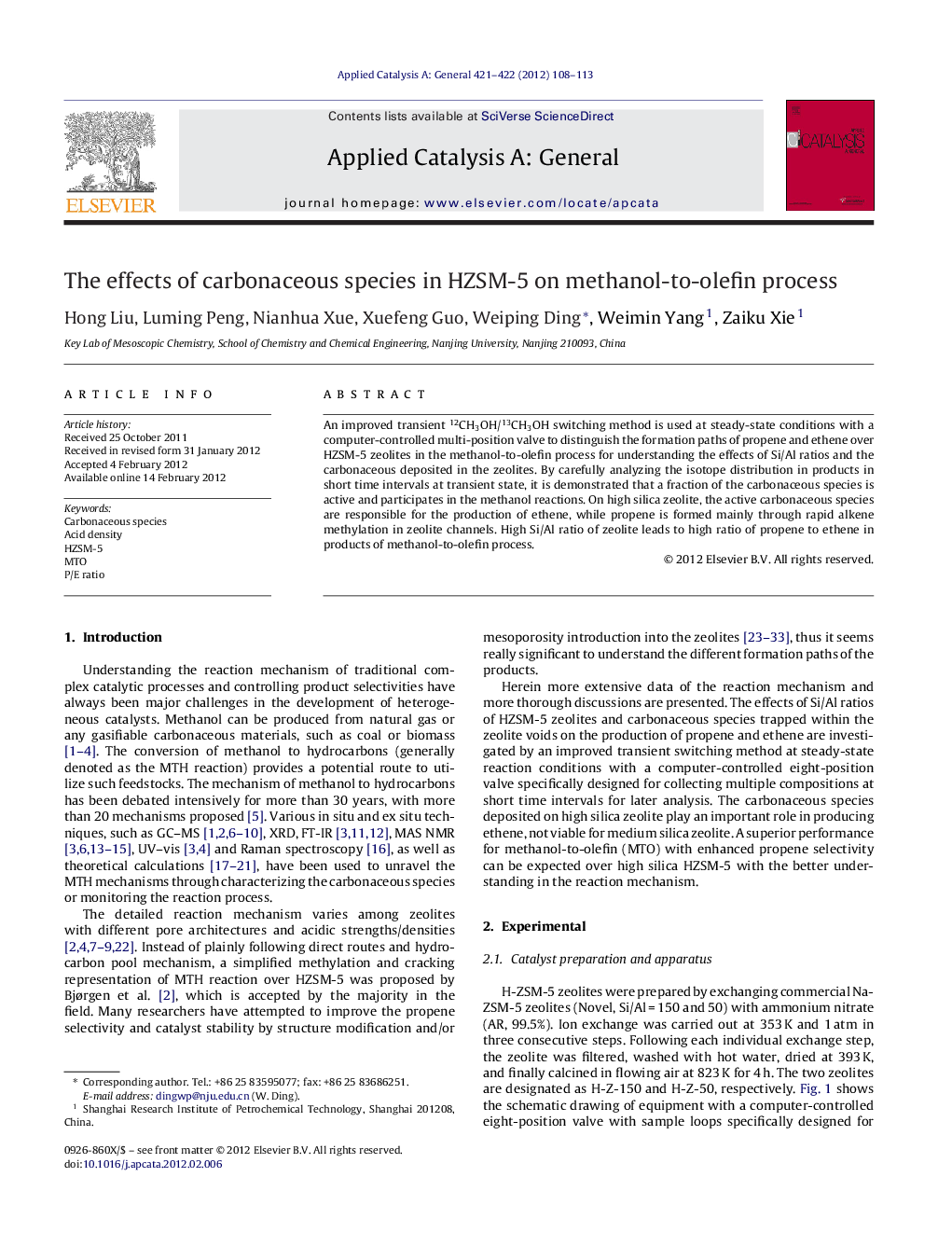| Article ID | Journal | Published Year | Pages | File Type |
|---|---|---|---|---|
| 40981 | Applied Catalysis A: General | 2012 | 6 Pages |
An improved transient 12CH3OH/13CH3OH switching method is used at steady-state conditions with a computer-controlled multi-position valve to distinguish the formation paths of propene and ethene over HZSM-5 zeolites in the methanol-to-olefin process for understanding the effects of Si/Al ratios and the carbonaceous deposited in the zeolites. By carefully analyzing the isotope distribution in products in short time intervals at transient state, it is demonstrated that a fraction of the carbonaceous species is active and participates in the methanol reactions. On high silica zeolite, the active carbonaceous species are responsible for the production of ethene, while propene is formed mainly through rapid alkene methylation in zeolite channels. High Si/Al ratio of zeolite leads to high ratio of propene to ethene in products of methanol-to-olefin process.
Graphical abstractFigure optionsDownload full-size imageDownload high-quality image (153 K)Download as PowerPoint slideHighlights► Transient reaction of 12CH3OH/13CH3OH switching is more carefully analyzed. ► Propene and ethene are formed through different paths over high silica HZSM-5. ► High Si/Al ratio of zeolite leads to high propene/ethene ratio in products. ► A partial carbonaceous species in zeolite is active for methanol reactions.
